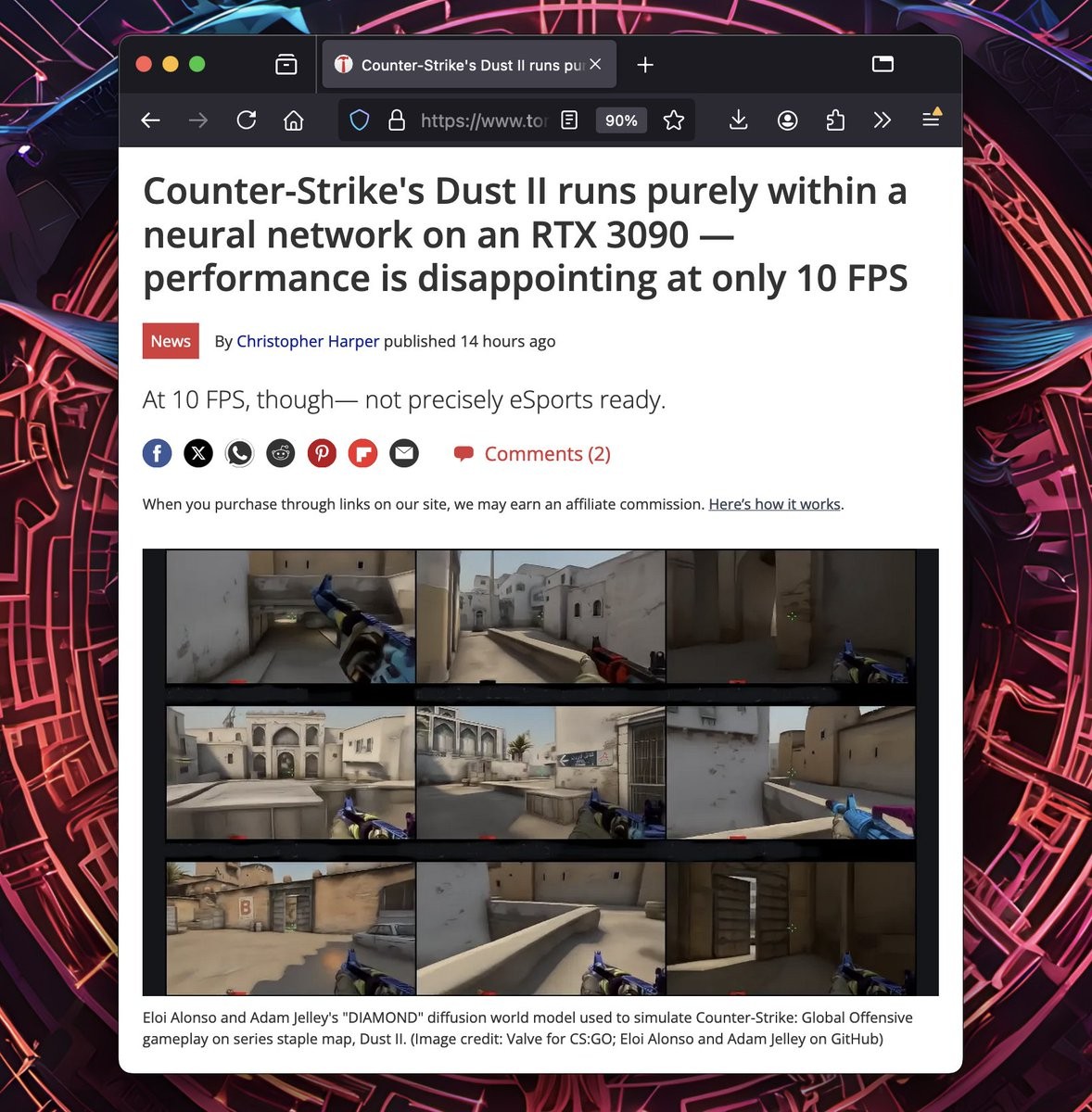
In a groundbreaking development for artificial intelligence and gaming, researchers have successfully created a neural network capable of simulating Counter-Strike: Global Offensive's iconic Dust II map. This impressive feat was accomplished using a single NVIDIA RTX 3090 graphics card, showcasing the potential of AI in game simulation.
The project, known as "DIAMOND" (Diffusion for World Modeling), was spearheaded by AI researcher Eloi Alonso and his team. They trained the neural network using footage from Dust II Deathmatch, effectively teaching the AI to replicate the game's environment and mechanics.
While the achievement is remarkable, the current performance leaves much to be desired. The AI-generated version of Dust II runs at a mere 10 frames per second (FPS), far below the smooth gameplay experience that Counter-Strike players are accustomed to.
Despite the low frame rate, the simulation demonstrates several intriguing aspects of AI-generated gaming environments. The neural network's interpretation of game mechanics has led to some unexpected and dreamlike behaviors. For instance, players can jump indefinitely within the simulation, as the AI model treats the jump action as a fixed vertical movement rather than adhering to the physics engine's gravity and collision detection rules.
Other peculiarities include weapons that morph under certain lighting conditions and the ability for players to phase through some walls. These glitches, while unintended, offer fascinating insights into how AI interprets and recreates complex gaming environments.
It's worth noting that this project is primarily a technical demonstration of the RTX 3090's AI capabilities, rather than a practical alternative to playing the actual game. Counter-Strike 2, the latest iteration of the franchise, is freely available on Steam and offers superior performance on a wide range of gaming hardware.
As AI technology continues to advance, projects like DIAMOND raise important questions about the future of game development and the potential implications of AI-generated content. While the current implementation may be more of a curiosity than a viable gaming option, it undoubtedly represents a significant step forward in the field of AI and gaming.